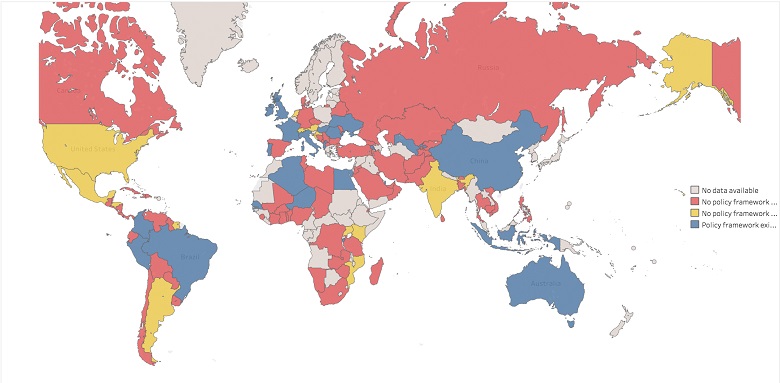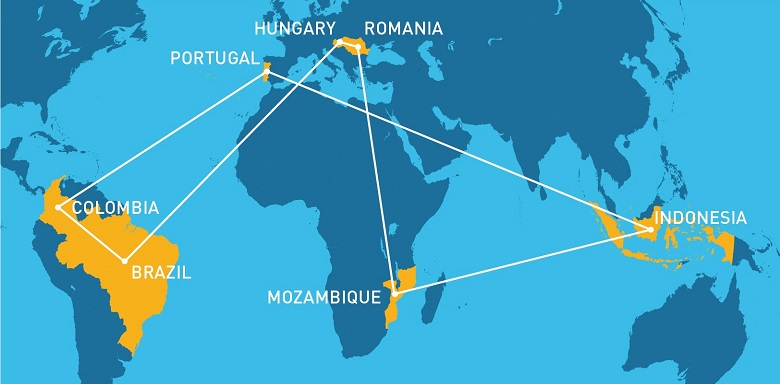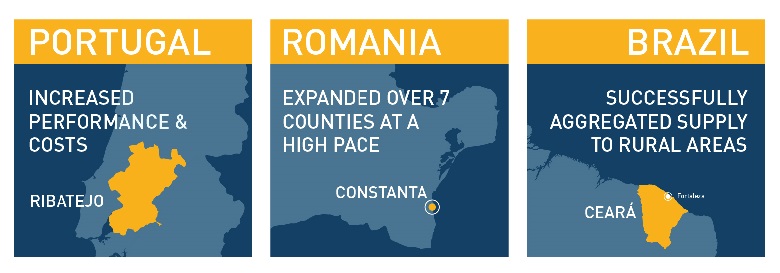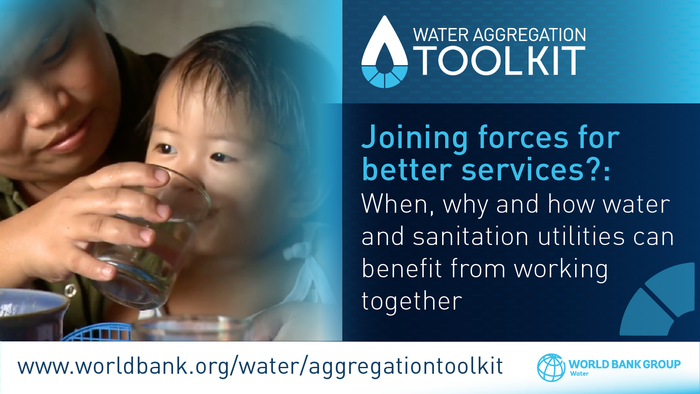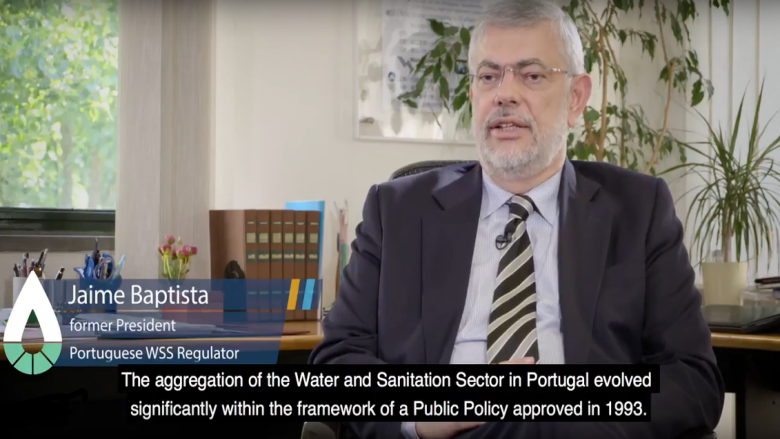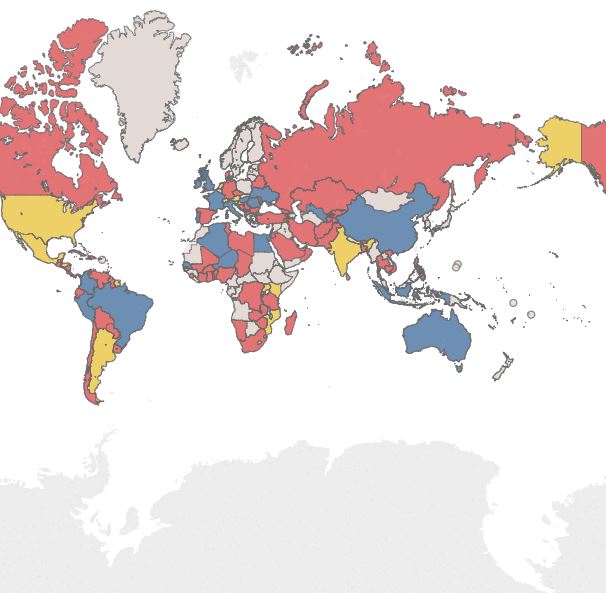Join us as we equip the global WSS sector with data sets, tools, resources, and evidence-based guidance to the when, why, and how of aggregation processes.
Explore the interactive map and glossary of related definitions, highlighting global trends in utility aggregation; read the new World Bank report entitled “Joining Forces for Better Services? When, Why and How Water and Sanitation Utilities can Benefit from Working Together”; watch videos with first-hand interviews; and discover the purpose, context, and design of aggregation.
Click on the index quick links below to easily jump to toolkit sections, or continue scrolling to explore all our toolkit resources representing case studies from different countries with each their own WSS challenges and solutions: Hungary, Brazil, Colombia, Romania, Portugal, Mozambique, and Indonesia.


Explore the basic concepts of WSS utility aggregations

View road map to a successful aggregation

Interact with the aggregation global trends: interactive map and glossary

Read and better understand global case studies

Watch case study videos with first-hand interviews

Explore the supporting documents of the global study

About the global study and toolkit



What is aggregation? | The process by which two or more WSS service providers consolidate some or all of their activities under a shared organizational structure, whether it implies physical infrastructure interconnection or not, and whether the original service providers continue to exist or not.
The aggregation typology | The design of a successful aggregation should consider both the intended purpose and the context in which it takes place, and characterizes the design of an aggregation as a function of its scope, scale, process, and governance. The infographic below walks through the four design dimensions of WSS utility aggregation: scope, scale, process, and governance.
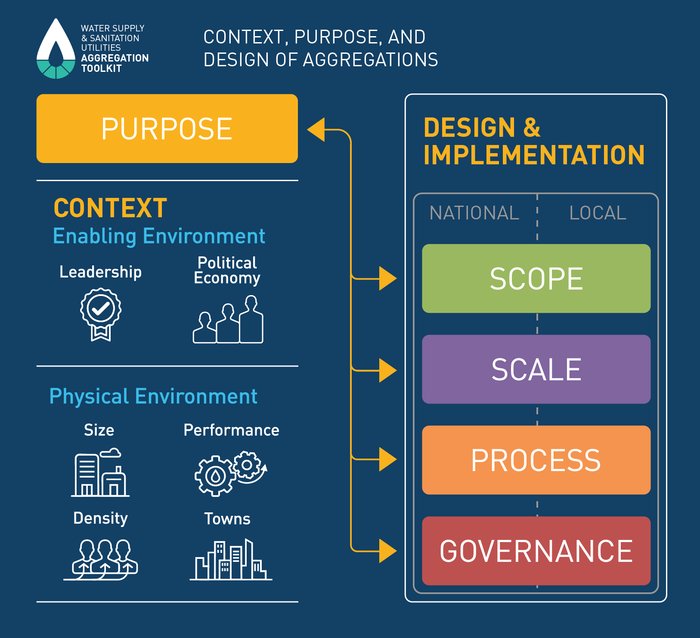
Learn more about:
Context | Purpose | Scale | Scope | Process | Governance
Go to index


What is a successful aggregation? | One in which the aggregated service provider performs significantly better than the previously disaggregated entities with regard to the intended purpose, without unacceptable deterioration of other performance dimensions. Our successful aggregation guidance (Chapter 7 of report “Joining Forces for Better Services? When, Why and How Water and Sanitation Utilities can Benefit from Working Together”) is a sum of the lessons learned about successful aggregation based on the evidence gathered at the international level, through the statistical analysis and the 14 case studies.
Six key policy messages | Dive into the six broad conclusions from the global study. They are listed here in no order of importance. 1. Aggregation is a policy option, not a panacea for all sector challenges. 2. Aggregations come in many different shapes and forms, depending on the local circumstances. 3. The design of a successful aggregation will depend on the intended purpose of the aggregation, as well as on the overall context in which it takes place. 4. In the developing world, aggregation is primarily a means to deliver better services rather than to lower costs. 5. Aggregation is a gradual, long-term process that requires strong stakeholder commitment. 6. Aggregations are most successful when accompanied by a broader sector reform addressing governance, financing, and regulatory issues at the sector level. Read the report to find out more about each of the six key policy messages.
The road map | Explore the road to a successful aggregation that starts with the decision about whether aggregation is the proper policy instrument given the context and purpose intended, continuing to the design of a successful aggregation process and its implementation, and finally looking at how to sustain such success. There is much more information to be found about the stages of WSS utility aggregation in the global study.
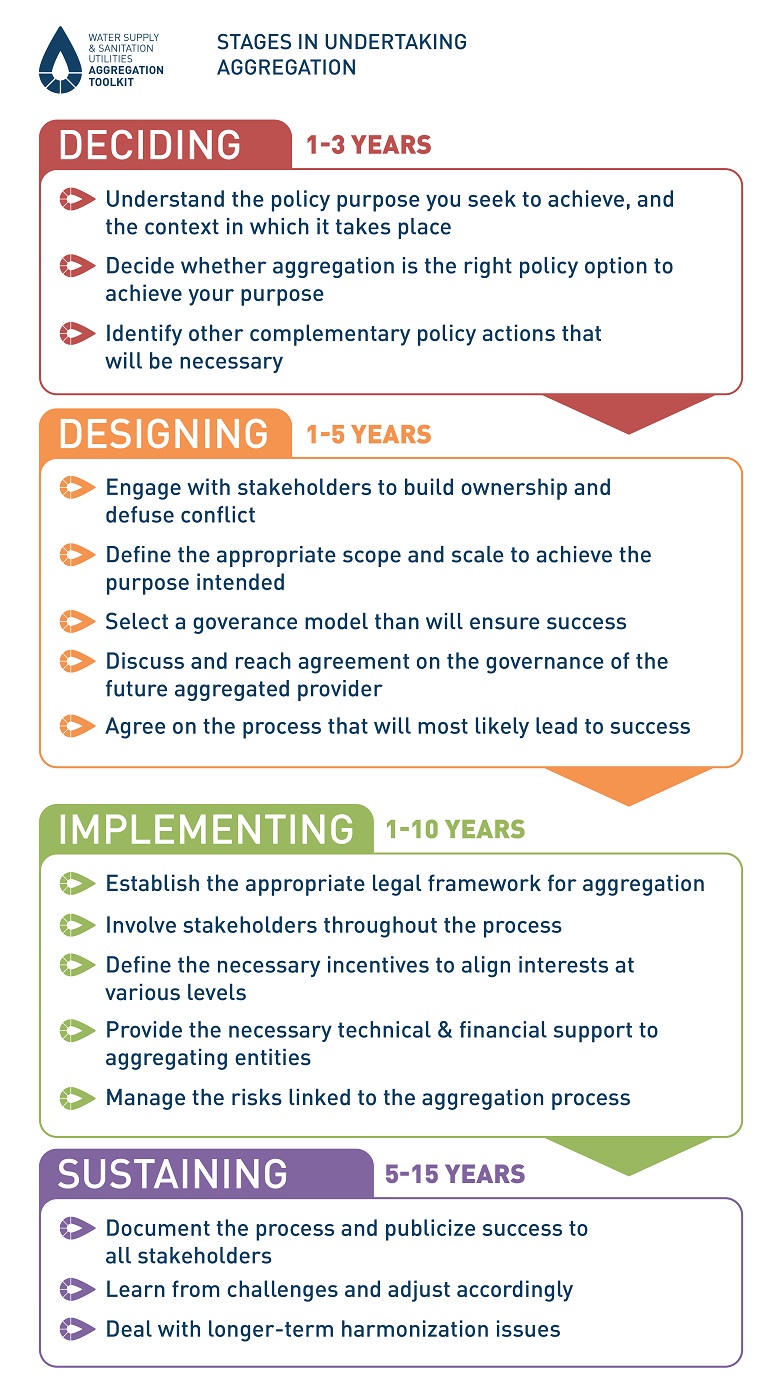


The interactive map | Investigate an inventory of open data on the provision and aggregation of water and sanitation services worldwide, from public sources such as the Joint Monitoring Programme, the Organization for Economic Cooperation and Development, and World Bank databases. With data from over 110 countries representing over 88 percent of the world’s population, the interactive map visualizes global data to improve understanding of cases of WSS utility aggregation.
The glossary of definitions | Discover aggregation-specific definitions in our glossary of definitions to ensure that you understand the terms, phrases, and words we use. The global study includes much more information about each of the stages discussed previously, and the road map below serves as an preview of the full content of the report.
